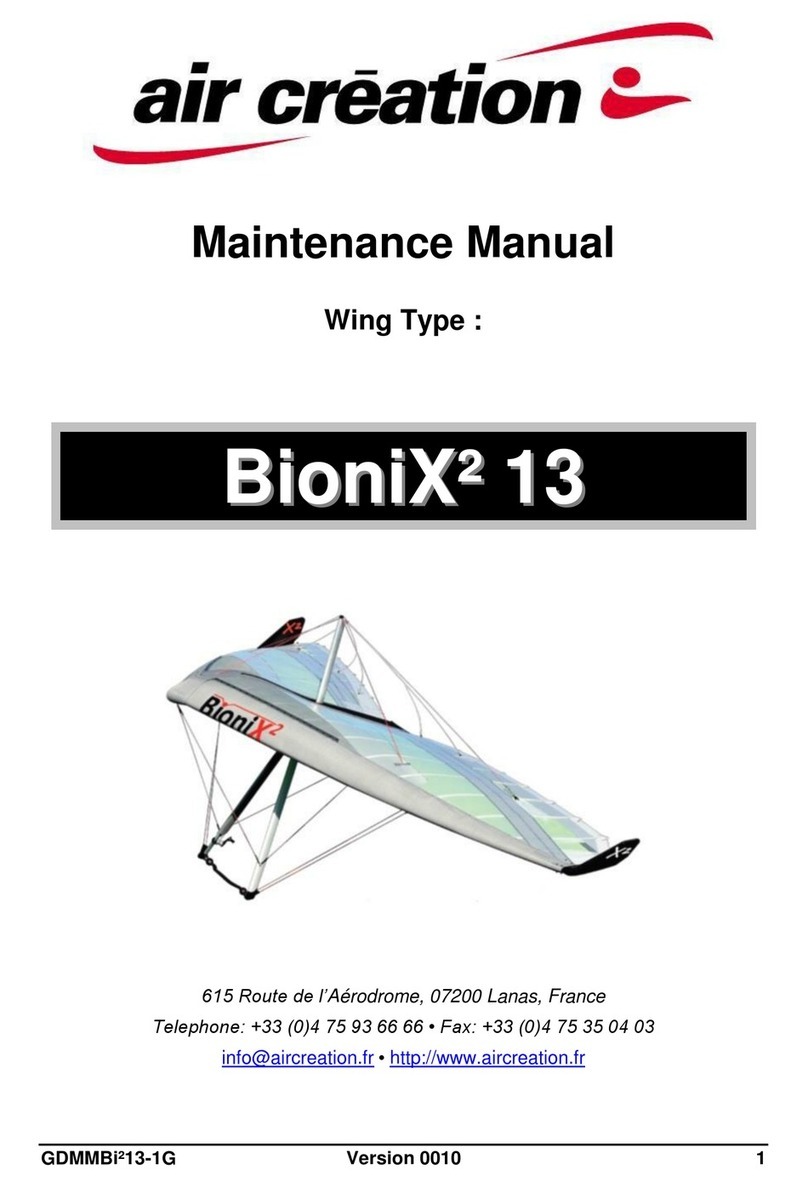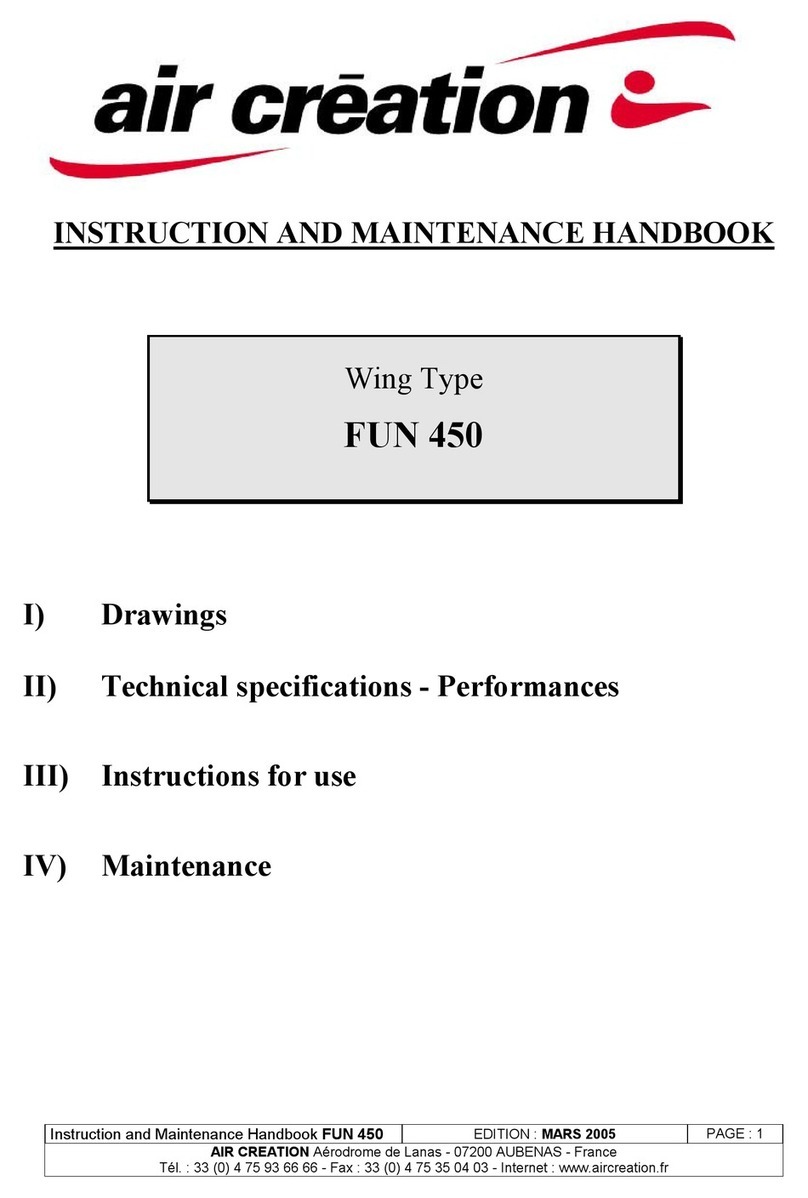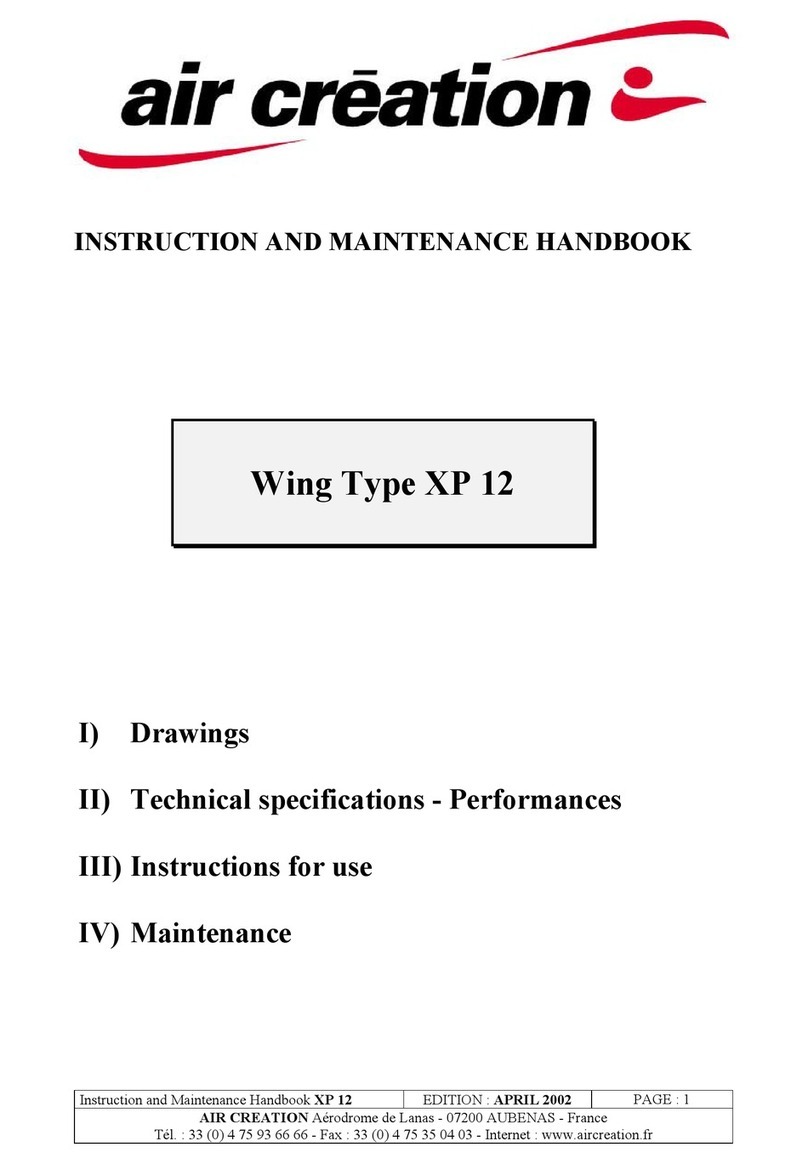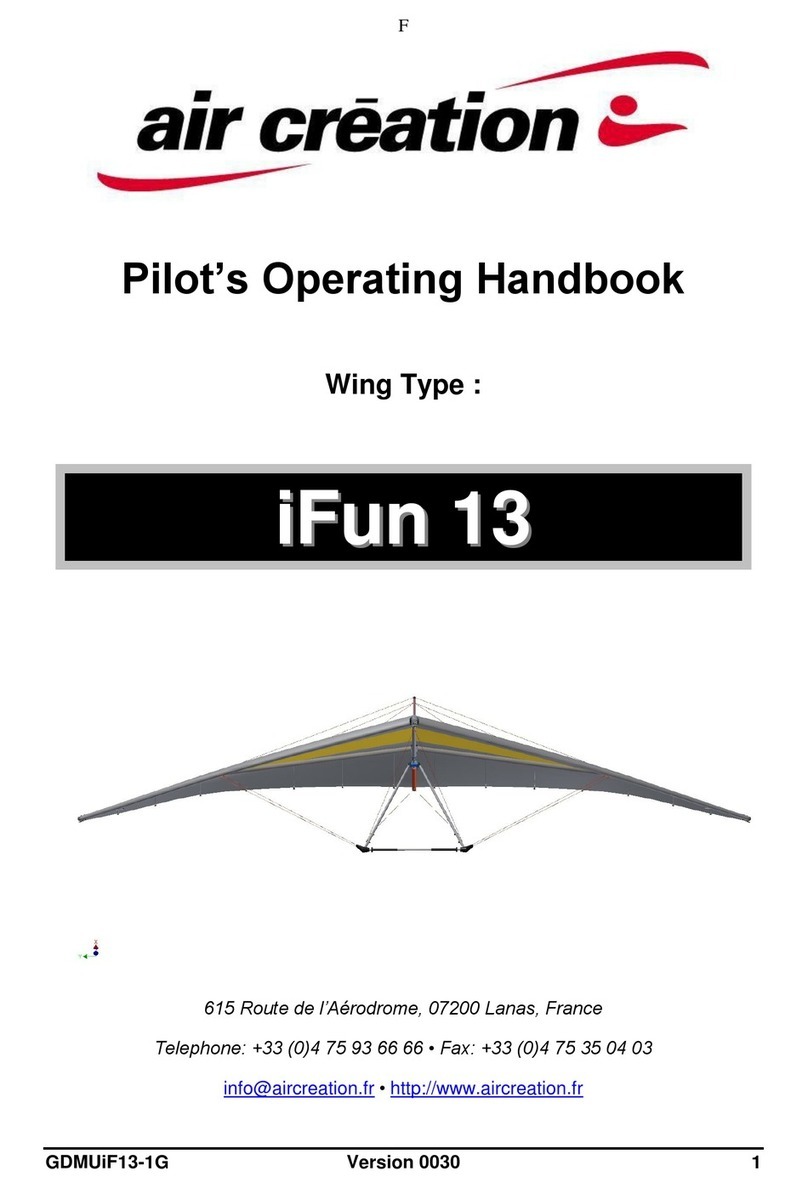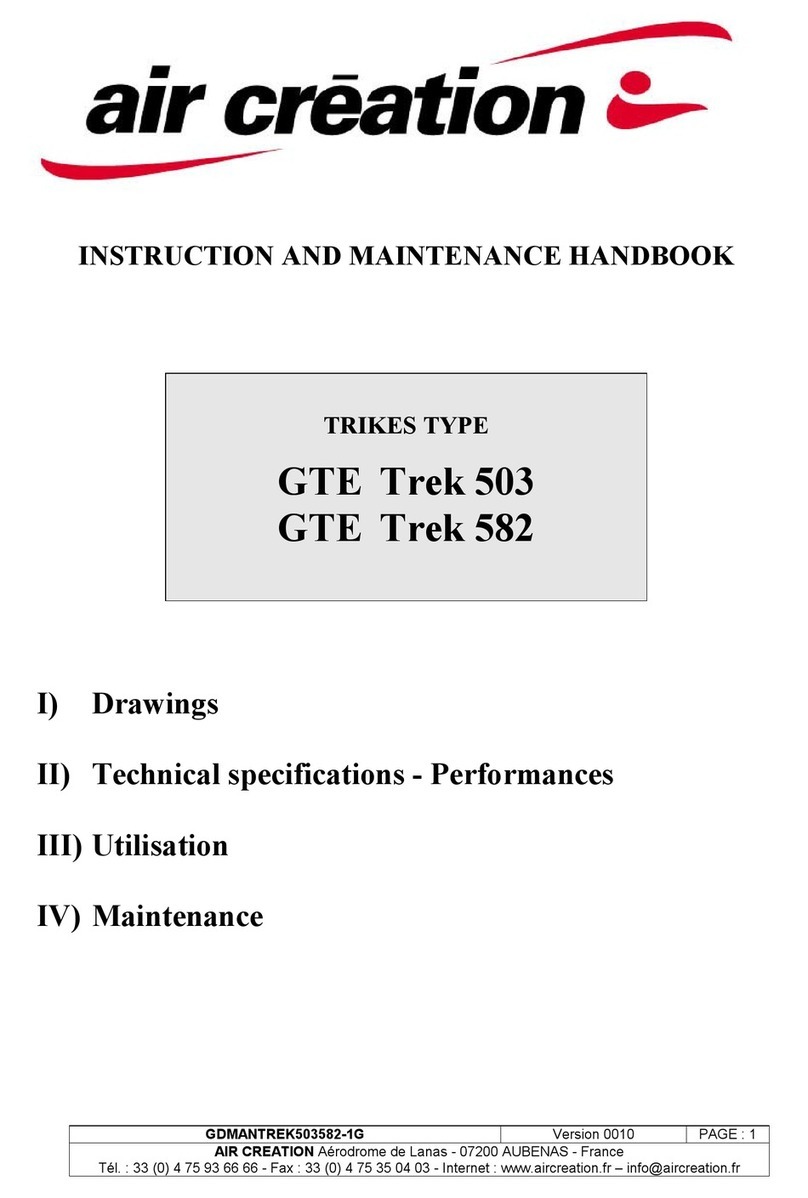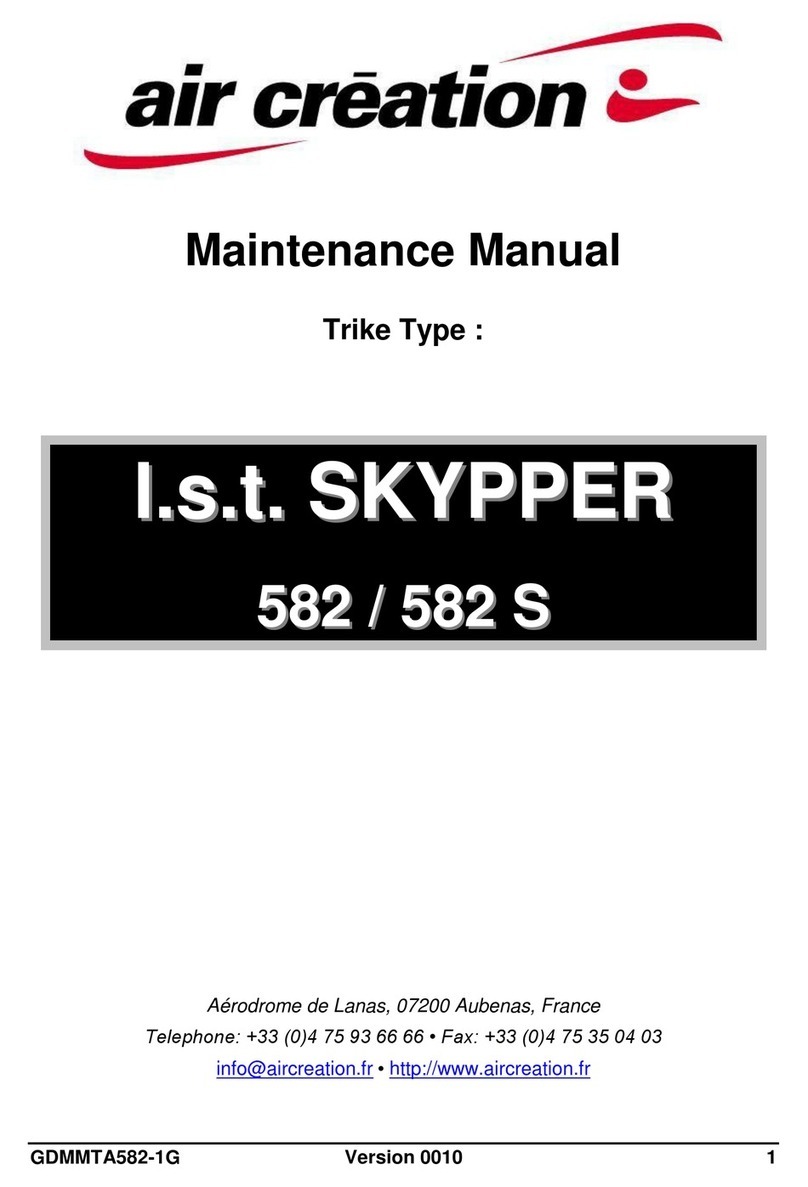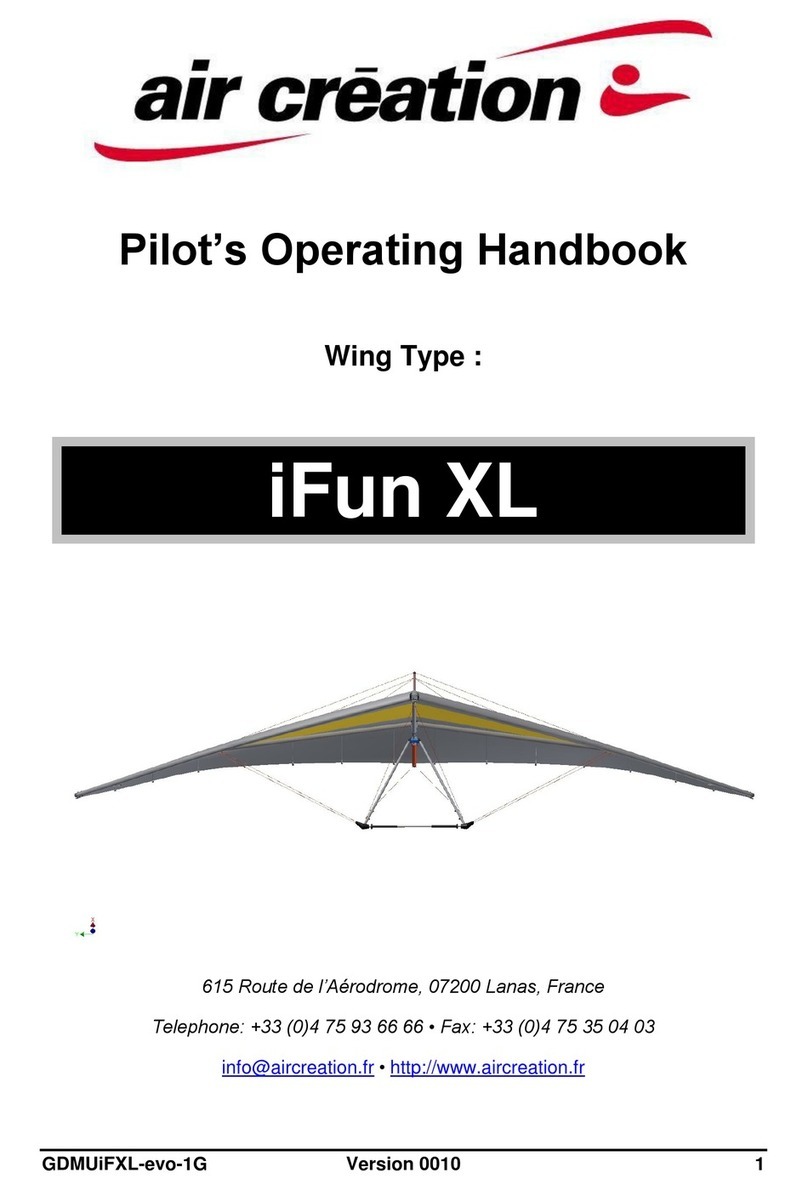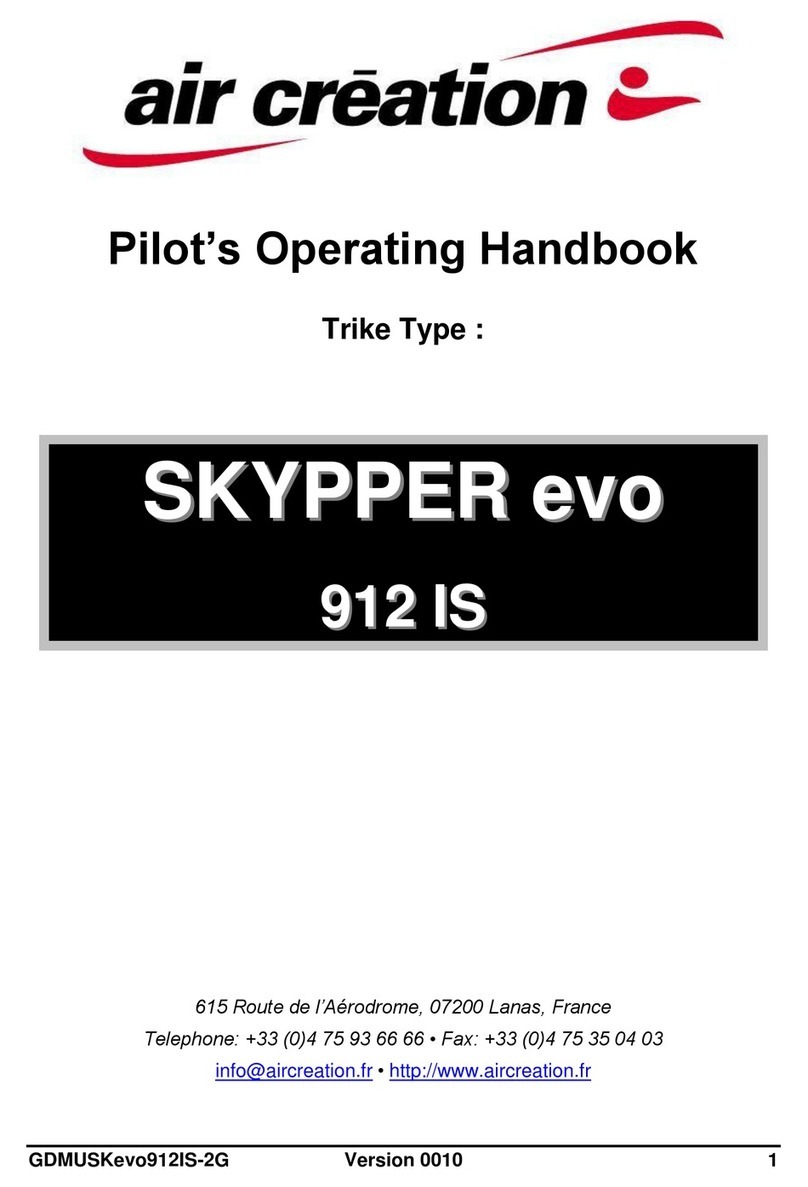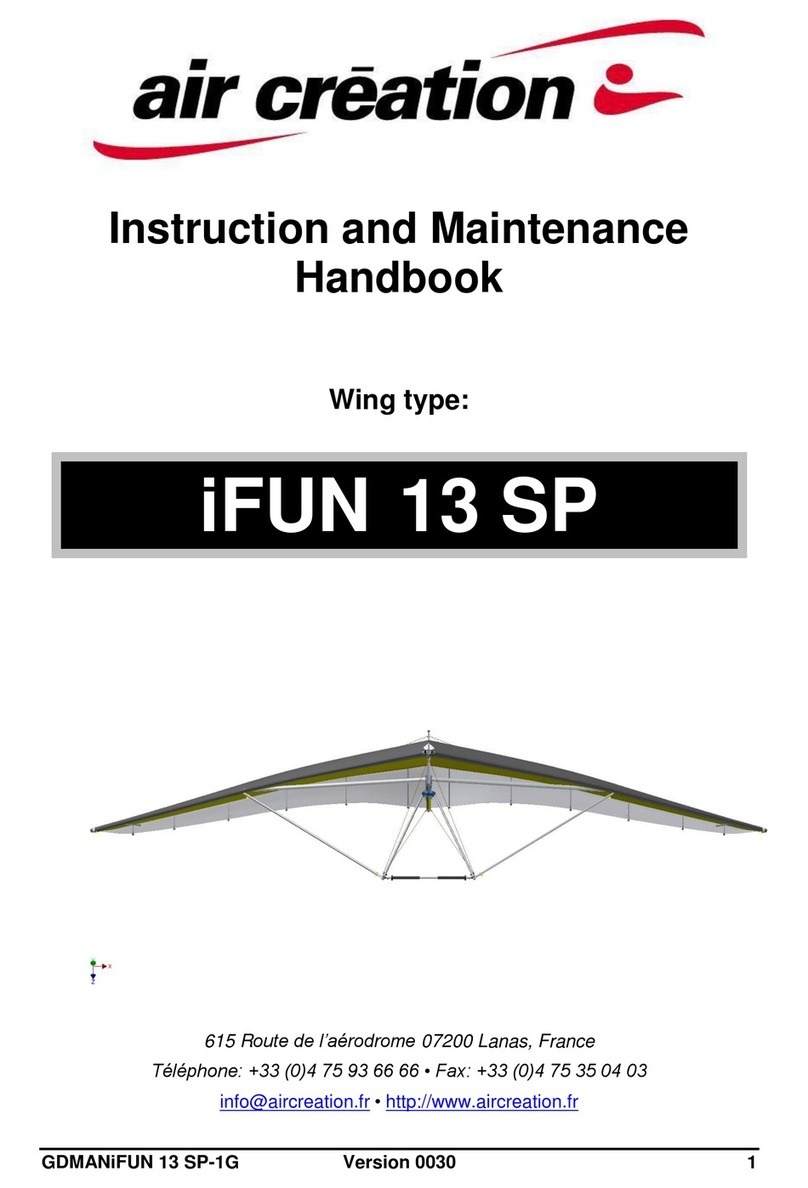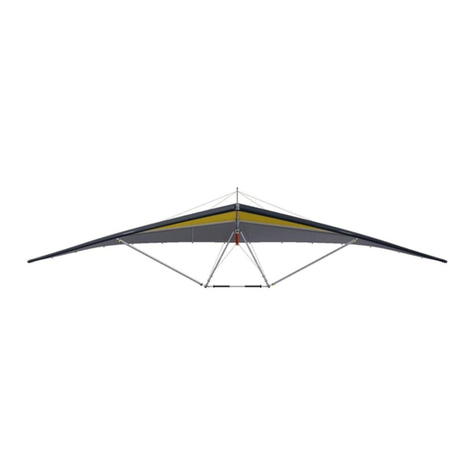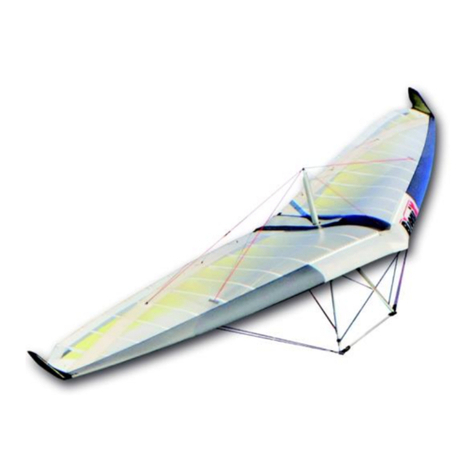
GDMANPixel303-1F Version 0010 10
5.4.3 Baggage Storage
Luggage can be stored in the following locations:
• The bag in front of the pilot, under his legs. Its maximum load is 3 Kg.
• The removable bag behind the seat. Its maximum load is 9 Kg.
The weight of the baggage shall be taken into account for the calculation of the mass of
the aircraft before take-off.
5.5 Preflight check
The following is a brief summary of the minimum pre-flight inspection, which assumes
that the scheduled maintenance checks outlined in the maintenance manual has been
performed.
If you are unsure, it does no harm to increase the number of items in your inspection in
accordance with the recommendations of the maintenance manual.
1. Check the wing as indicated in the user’s manual.
2. Ignition switches and master switch OFF
3. Check the trike-to-wing fastenings and safety devices (bolt, nut and split ring).
4. Check that the hang point backup cable is correctly positioned and fastened.
5. Check the lower and upper fixing of front strut and safety devices (bolts, nuts and split rings).
6. Check the pylon fixation bolt and safety devices (bolts, nuts and split rings).
7. Check the engine mount assembly, rubber mounts, security and condition.
8. Check the propeller, the exhaust, its fastening springs and rubber mounts, the air filter, the carburetor
and their rubber flanges for security and condition.
9. Check the fuel tank assembly, its cap, the fuel filter, the rubber pump and the fuel hoses for security,
integrity, and leaks.
10. Check the coolant level in the expansion tank, the hoses and their sleeve clamps for security,
integrity, and leaks.
11. Make sure the water cooler air box is unobstructed.
12. If there may be water in the fuel tank (due to condensation, fuel quality) eliminate it by
disconnecting the fuel hose from the carburetor. To drain, remove the end of the tube, place it in a
recipient under the tank and suction with the priming bulb. Refit the tube after draining.
13. Check of the front wheel steering assembly, position and fixing of pedals, tire condition and
inflation.
14. Check the rear wheels for security and conditions, tires condition and inflation.
15. Security of seat cushions and backrests.
16. Condition of seat belt and function of buckle.
17. Check the correct closing of the storage bags in front of the seat and behind the seatback.
18. Check hand and foot throttle operation and friction. Move the throttle pedal back and forth to check
that the piston on each carburetor returns to idle position. If you do not hear this particular noise,
the cables may be stuck. Starting the engine under these conditions may cause loss of control of the
aircraft and cause a serious accident, or even death, due to the strong push after starting.
19. Check brake pedal operation
20. Check security of windscreen
21. Check that there is no loose item in cockpit room.
